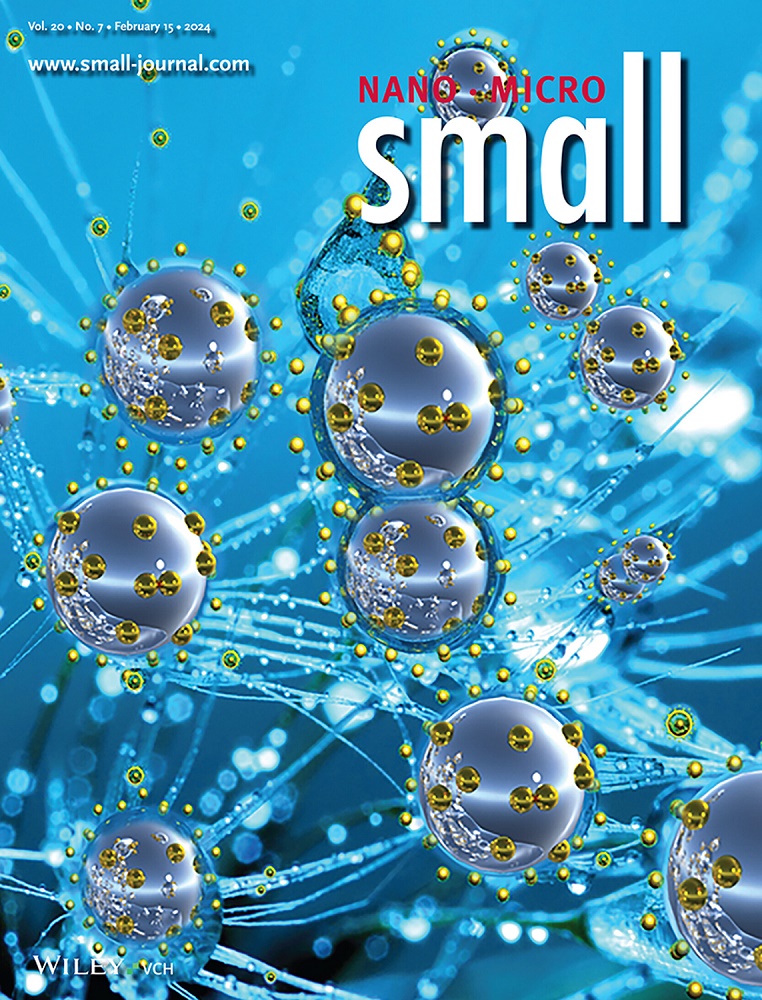Conformation-Dependent Dynamics of Polymer Capture and Translocation through Solid-State Nanopores.
IF 13
2区 材料科学
Q1 CHEMISTRY, MULTIDISCIPLINARY
引用次数: 0
Abstract
Polymer translocation through solid-state nanopores has attracted widespread attention in many biological processes. However, the dynamics of capture and translocation through nanopores are highly correlated with polymer conformation. Using plasmid pBR322 DNA with supercoiled and linear structures, this work explores the effects of polymer conformation on capture and translocation through nanopores. The polymer translocation dynamics are discussed with the relationship between current blockage characteristics and applied voltages across various pore sizes. Subsequently, linear plasmids are used to clarify the effect of polymer conformation on nanopore capture and translocation. The nonlinear relationships between current blockage amplitudes and voltages demonstrate that the linear conformation affects the plasmid DNA capture process. A decrease in the ratio of supercoiled plasmids improved the frequency of folding translocation and decreased the standard deviation of blockage current amplitudes. As the proportion of supercoiled plasmids rises, the impact of partially folding linear conformation on mixed plasmids translocation is enhanced with increasing applied voltage. Furthermore, the results reveal a polymer conformation-dependent bias in capture and translocation processes, named the "crowding effect". This study provides valuable insights into the dynamics of polymer conformational transitions through solid-state nanopores, that have significant implications for improving sequencing and sensing technologies.固体纳米孔中聚合物捕获和转移的构象依赖动力学。
聚合物通过固体纳米孔的易位在许多生物过程中引起了广泛的关注。然而,通过纳米孔的捕获和转运动力学与聚合物构象高度相关。利用具有超卷曲和线性结构的质粒pBR322 DNA,本研究探讨了聚合物构象对通过纳米孔捕获和易位的影响。讨论了聚合物的移位动力学,以及不同孔径下电流阻塞特性与外加电压的关系。随后,线性质粒被用来阐明聚合物构象对纳米孔捕获和易位的影响。电流阻断幅值与电压之间的非线性关系表明,线性构象影响质粒DNA捕获过程。超卷曲质粒比例的降低提高了折叠易位的频率,降低了阻塞电流幅值的标准差。随着超卷曲质粒比例的增加,部分折叠的线性构象对混合质粒易位的影响随着外加电压的增加而增强。此外,研究结果还揭示了聚合物在捕获和易位过程中的构象依赖性偏差,称为“拥挤效应”。这项研究为聚合物通过固态纳米孔的构象转变动力学提供了有价值的见解,这对改进测序和传感技术具有重要意义。
本文章由计算机程序翻译,如有差异,请以英文原文为准。
求助全文
约1分钟内获得全文
求助全文
来源期刊

Small
工程技术-材料科学:综合
CiteScore
17.70
自引率
3.80%
发文量
1830
审稿时长
2.1 months
期刊介绍:
Small serves as an exceptional platform for both experimental and theoretical studies in fundamental and applied interdisciplinary research at the nano- and microscale. The journal offers a compelling mix of peer-reviewed Research Articles, Reviews, Perspectives, and Comments.
With a remarkable 2022 Journal Impact Factor of 13.3 (Journal Citation Reports from Clarivate Analytics, 2023), Small remains among the top multidisciplinary journals, covering a wide range of topics at the interface of materials science, chemistry, physics, engineering, medicine, and biology.
Small's readership includes biochemists, biologists, biomedical scientists, chemists, engineers, information technologists, materials scientists, physicists, and theoreticians alike.
 求助内容:
求助内容: 应助结果提醒方式:
应助结果提醒方式:


